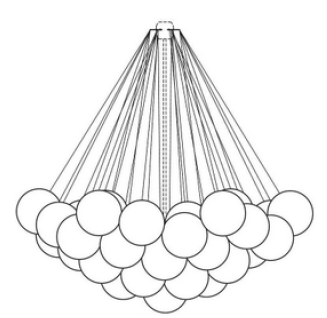Federal Circuit Delivers Win for Wireless Companies But Preserves Inventor’s Patent
“Like the claim language in Convolve and Varma, the claim language here requires a singular element—’a microprocessor’—to be capable of performing all of the recited functionality.” – Federal Circuit
The U.S. Court of Appeals for the Federal Circuit (CAFC) in a precedential opinion today affirmed a district court’s judgment that AT&T Mobility LLC did not infringe an inventor’s wireless communications technology patent but held that AT&T had forfeited its chance to prove the patent is invalid on appeal.
Joe Salazar’s U.S. Patent No. 5,802,467 is titled, “Wireless and Wired Communications, Command, Control and Sensing System for Sound And/or Data Transmission and Reception.” After unsuccessfully suing HTC Corp. for infringement in 2016, Salazar sued HTC’s customers, AT&T, Sprint, T-Mobile and Verizon, in 2019, alleging certain phones sold by the companies infringed his patent. A jury ultimately found that the companies did not infringe but that the patent was not invalid as anticipated.
The representative claim language at issue appears in Independent Claim 1:
1. A communications, command, control and sensing system for communicating with a plurality of external devices comprising:
a microprocessor for generating a plurality of control signals used to operate said system, said microprocessor creating a plurality of reprogrammable communication protocols, for transmission to said external devices wherein each communication protocol includes a command code set that defines the signals that are employed to communicate with each one of said external devices;
a memory device coupled to said microprocessor configured to store a plurality of parameter sets retrieved by said microprocessor so as to recreate a desired command code set, such that the memory space required to store said parameters is smaller than the memory space required to store said command code sets;
a user interface coupled to said microprocessor for sending a plurality of signals corresponding to user selections to said microprocessor and displaying a plurality of menu selections available for the user’s choice, said microprocessor generating a communication protocol in response to said user selections; and….
(emphasis added by the CAFC)
Correct Construction
On appeal, Salazar argued that the district court’s claim construction was erroneous, and he was therefore entitled to a new jury trial. Specifically, Salazar said that the court’s construction of “a” microprocessor and “said” microprocessor was incorrect and that the claim terms should have been interpreted “to require one or more microprocessors, any one of which may be capable of performing each of the ‘generating,’ ‘creating,’ and ‘retrieving’ functions recited in the claims.” The district court had construed the claim to mean that, while “the term ‘a microprocessor’ does not require there be only one microprocessor, the subsequent limitations referring back to ‘said microprocessor’ require that at least one microprocessor be capable of performing each of the claimed functions.” The CAFC agreed.
Citing cases such as Baldwin Graphic Sys., Inc. v. Siebert, Inc.; Harari v. Lee; Convolve, Inc. v. Compaq Computer Corp.; and In re Varma, the CAFC explained that its precedent supports this reading of the claim terms. “Like the claim language in Convolve and Varma, the claim language here requires a singular element—’a microprocessor’—to be capable of performing all of the recited functionality,” wrote the appellate court.
The CAFC did not address AT&T’s challenge to the district court’s denial of its motion for summary judgment that Salazar’s claims were barred under claim preclusion and the Supreme Court’s decision in Kessler v. Eldred, “which prevents harassment of customers of an adjudged noninfringer in specific circumstances” because AT&T had agreed during oral argument that there was no need to reach the preclusion issue if the judgment of noninfringement was affirmed.
Anticipation Arguments Waived
However, as to AT&T’s contention that it was reversible error for the district court to hold that the challenged claims were not anticipated, the CAFC explained that AT&T’s argument was doomed by its failure to move for judgment as a matter of law under Federal Rule of Civil Procedure 50. While AT&T argued for the CAFC to “‘liberally constru[e]’ Rule 50(a) to require parties to move under that Rule only if ‘the court [or opposing] attorneys needed anymore enlightenment about [the appellant’s] position on those issues,’” citing Blackboard, Inc. v. Desire2Learn, Inc., the Federal Circuit said reliance on the Blackboard case was “misplaced.” There, the defendant made “cursory” Rule 50 motions on anticipation and obviousness and the district court acknowledged those motions, whereas here, AT&T was specifically asked about its desire to move for anticipation under Rule 50 and definitively confirmed it was not doing so. “In other words, AT&T clearly disavowed any intention to move for judgment as a matter of law regarding anticipation,” and thus waived any anticipation argument, said the CAFC.
Image Source: Deposit Photos
Image ID: 389379360
Author: jetcityimage2
Eileen McDermott
Eileen McDermott is the Editor-in-Chief of IPWatchdog.com. Eileen is a veteran IP and legal journalist, and no stranger to the intellectual property world, having held editorial and managerial positions at […see more]







